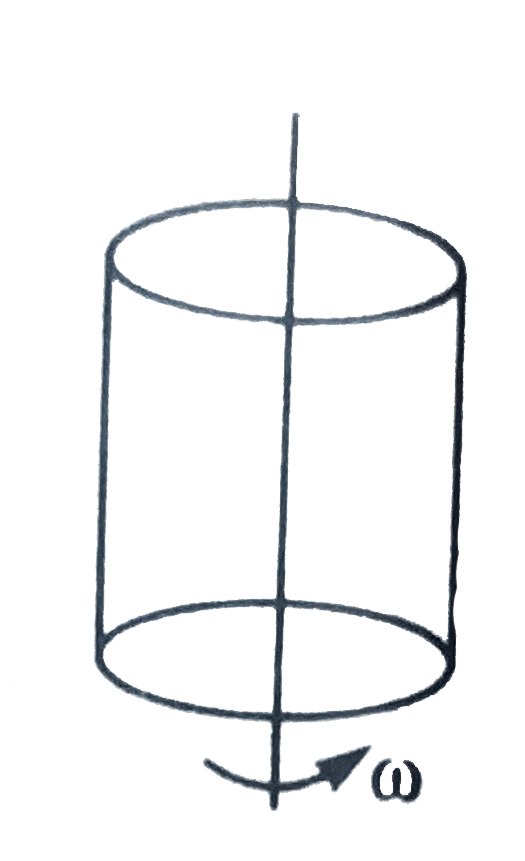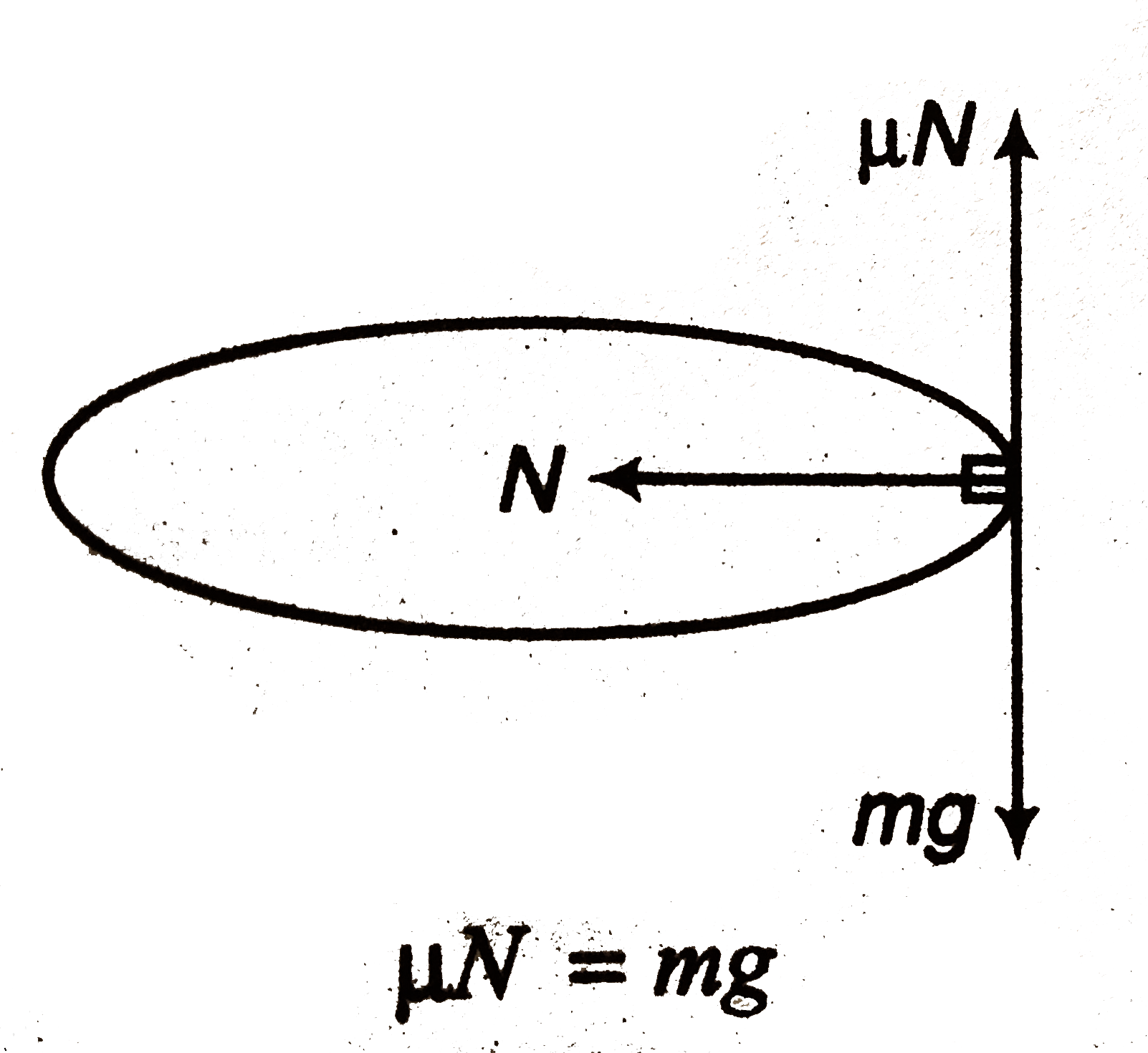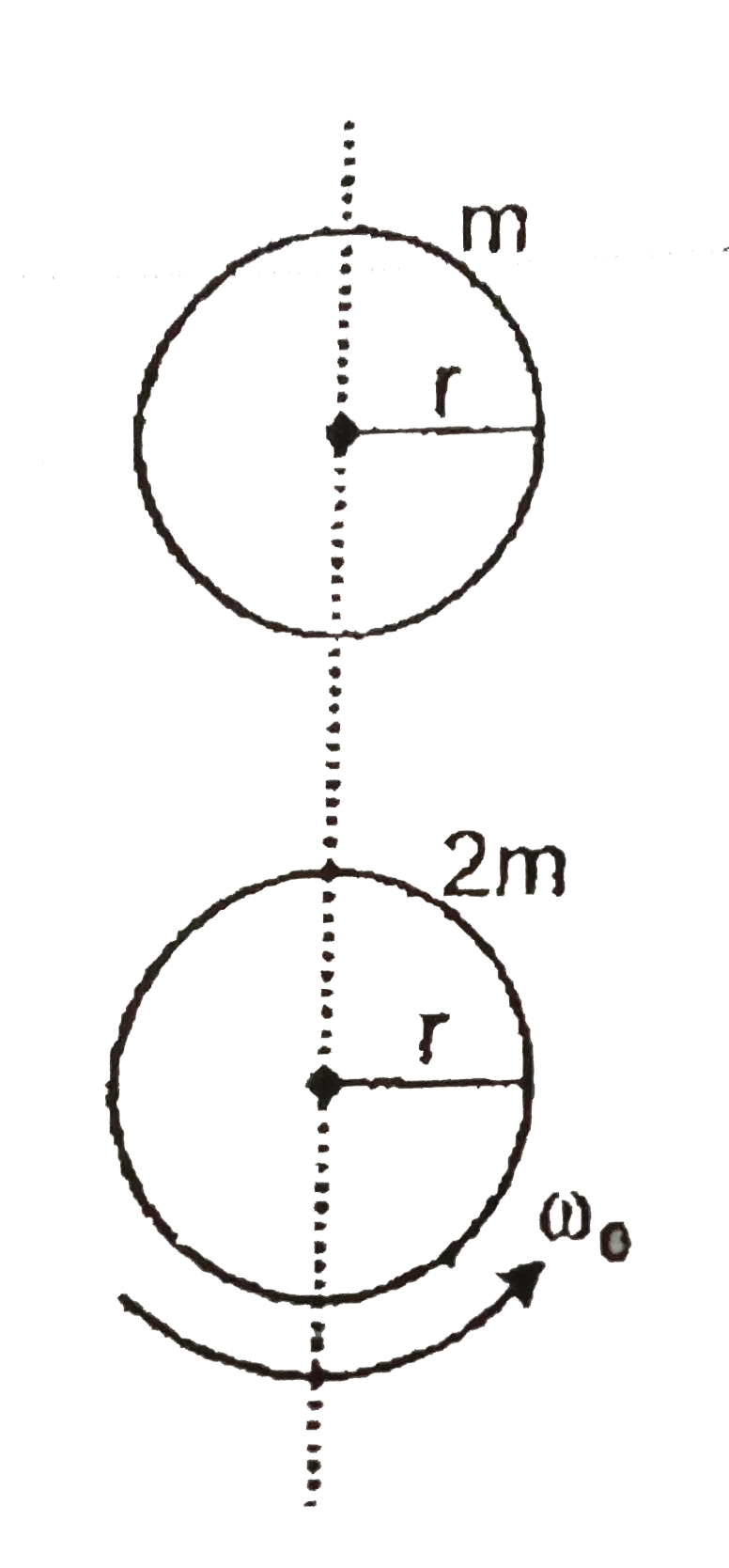An insect of mass m=3kg is inside a vertical drum of radius 2m that is rotating with an angular velocity of 5rads−1 . The insect doesn't fall off. Then, the minimum coefficient of friction required is

0.5
0.4
0.2
None of these
The correct Answer is:C
N=mRω2

μN=mg
Form these two equations, we get ltbr> μ=gRω2
=102×(5)2=0.2
Topper's Solved these Questions
- CIRCULAR MOTIONBook:DC PANDEYChapter:CIRCULAR MOTIONExercise:Level 2 More Than One Correct
Explore 5 Videos
- CIRCULAR MOTIONBook:DC PANDEYChapter:CIRCULAR MOTIONExercise:Level 2 Comprehension Based
Explore 5 Videos
- CIRCULAR MOTIONBook:DC PANDEYChapter:CIRCULAR MOTIONExercise:Level 1 Subjective
Explore 13 Videos
- CENTRE OF MASS, LINEAR MOMENTUM AND COLLISIONBook:DC PANDEYChapter:CENTRE OF MASS, LINEAR MOMENTUM AND COLLISIONExercise:Level 2 Subjective
Explore 21 Videos
- COMMUNICATION SYSTEMBook:DC PANDEYChapter:COMMUNICATION SYSTEMExercise:Only One Option is Correct
Explore 27 Videos
Similar Questions
A coin is placed at the edge of a horizontal disc rotating about a vertical axis through its axis with a uniform angular speed 2 rad s−1. The radius of the disc is 50 cm. Find the minimum coefficient of friction between disc and coin so that the coin does not slip. (Take g=10m/s2)
View SolutionA disc of mass m and radius r is gently placed on another disc of mass 2m and radius r. The disc of mass 2m is rotating with angular velocity ω0 initially.
The disc is placed such that axis of both are concident. The coefficient of friction is μ for surfaces of contact Assume that pressure on disc is uniformely distributed.

Angular velocity 'ω' when both discs start rotating together without slipping
View Solution
Knowledge Check
A body of mass 5kg is moving in a circle of radius 1 m with an angular velocity of 2 rad-s−1. The centripetal force acting on the body is
A10 NB20 NC30 ND40 NA body of mass 5 kg is moving in a circle of radius m 1 with an angular velocity of 2 radian/sec . The centripetal force is
A10 NB20NC30 ND40 NA homogeneous disc of mass 2 kg and radius 15 cm is rotating about its axis with an angular velocity of 4 rad/s. the linear momentum of the disc is
A1.2 kg m/sB1.0 kg m/sC0.6 kg m/sDzero
A soild cylinder of mass 2 kg and radius 0.2 m is rotating about its owm axis without friction with an angular velocity of 3 rad s−1 . Angular momentum of the cylinder is
View SolutionA disc of mass 2 kg and radius 0.2 m is rotating with angular velocity 30rad s−1. What is angular velocity, if a mass of 0.25 kg is put on periphery of the disc ?
View SolutionA disc of mass 2 kg and radius 0.2 m is rotating with angular veocity 30 rad s−1. What is angular velocity, if a mass of 0.25 kg is put on periphery of the disc?
View SolutionA body of mass 10 kg is moving in a circle of radian 1 m with an angular velocity of 2rad/s the centripetal force is
View SolutionA ring of radius 0.5 m and mass 10 kg is rotating about its diameter with angular velocity of 20 rad/s. Its KE is :-
View Solution